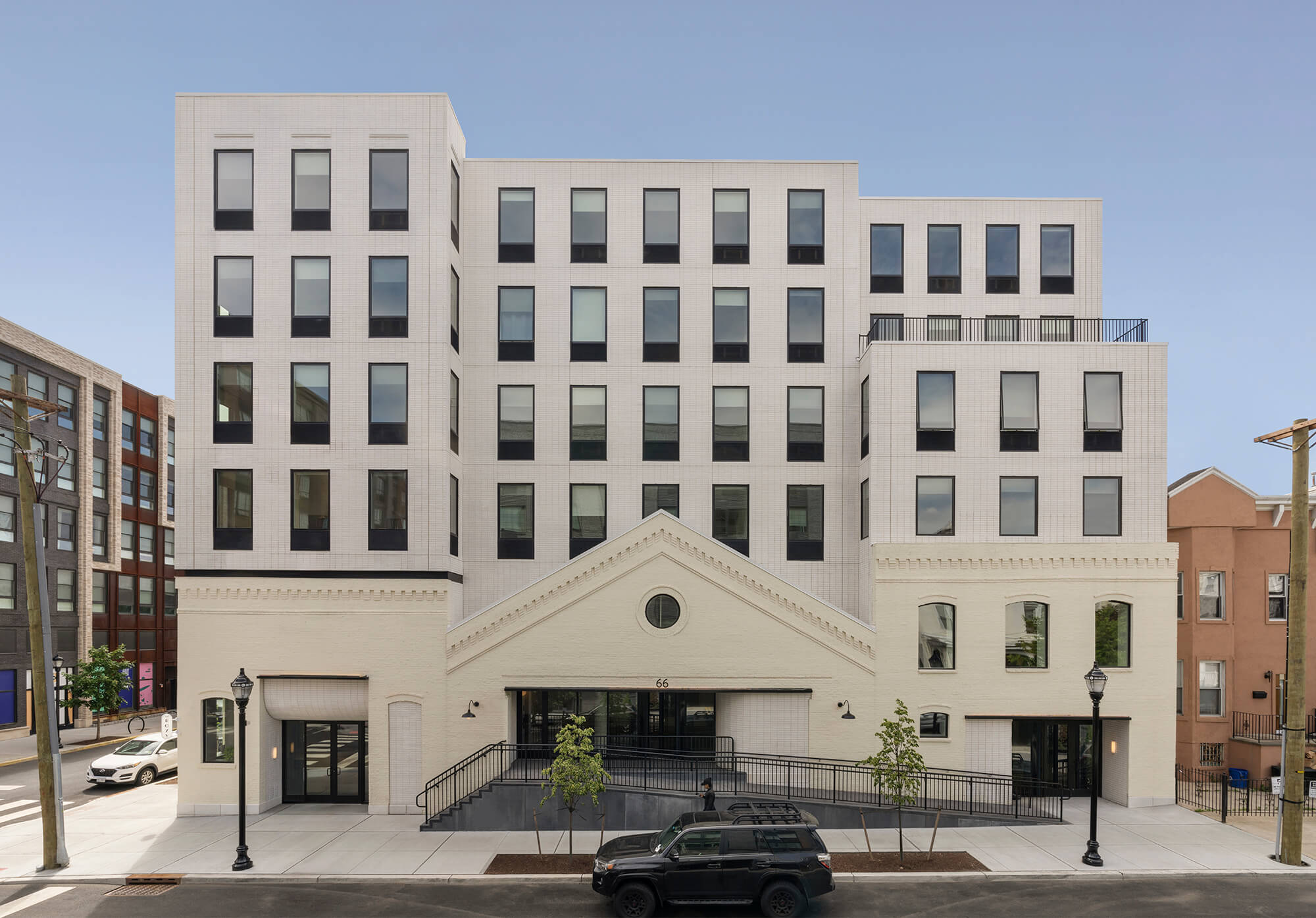The Morris Canal Historic District of Jersey City was once a conduit for supplying goods into New Jersey’s rust belt, and towns further afield in Pennsylvania. Today, it’s one of the most popular places to live west of the Hudson River. The neighborhood is known for its old buildings, walkable streets, and cozy eateries; all within a short commute to Manhattan.
GRT Architects, a Brooklyn office, recently transformed three, 19th-century brick warehouse buildings in the Morris Canal Historic District into 39 market rate and affordable residential units, a large restaurant, and a small cafe with on-site parking. Starling is located at 66 Monitor Street, and was completed this summer.
For Starling, GRT Architects added 4 new stories to the existing brick warehouses, creating a 6-story ensemble. The addition is stepped back from the property line so as to reduce vertical interruption to the historic streetscape. GRT Architects said this gesture places visual emphasis on the existing gabled roof at 66 Monitor Street, which Starling’s spacious lobby is located under.
New construction at 66 Monitor Street is expressed in stacked-bond brick lacquered in bright white. This is meant to provide contrast to the existing masonry below and emphasize the regular grid of windows, GRT Architects shared.

The facade at 66 Monitor Street was reinforced with structural steel. This allowed for the preservation of existing brick while creating a stabilized envelope. Following conventional mass wall principles, foot-thick existing brick was insulated from the interior and waterproofed from the exterior, GRT Architects noted.
GRT Architects selected all of the interior design, lighting, and furniture pieces for Starling. Indoors, GRT Architects aimed to reuse and recycle materials found on-site, like trusses. These restored trusses and rafters found in the old warehouses were installed inside the lobby. The elements complement the new concrete structural elements that were added and left exposed for decorative purposes.


The renovation and addition necessitated technical interventions. Starling is located in a flood plain, so the the ground floor was raised above the flood plain to stymie water rising scenarios. An ADA ramp was added to connect residents to the ground floor.
In Jersey City, other projects by GRT Architects, together with Ismael Leyva Architects, are underway. A 500-unit complex overlooking Liberty State Park is slated for completion in the coming years.

